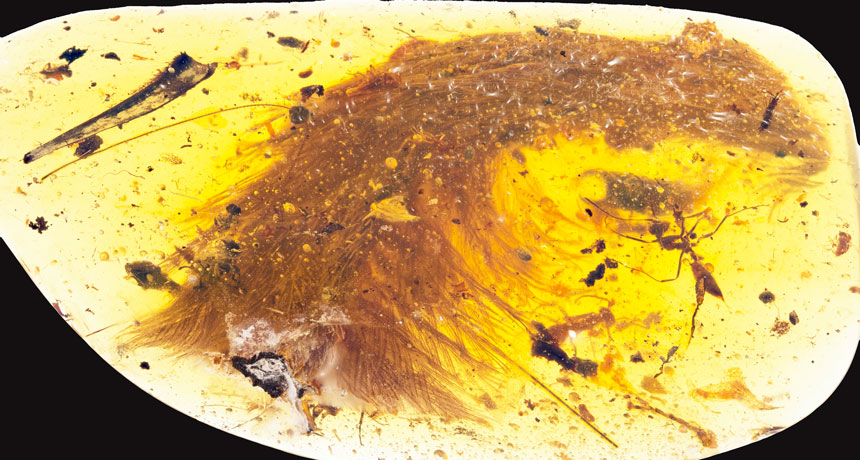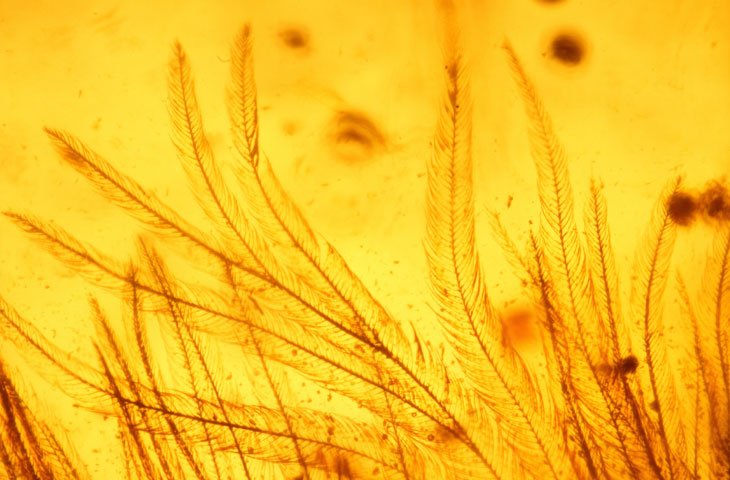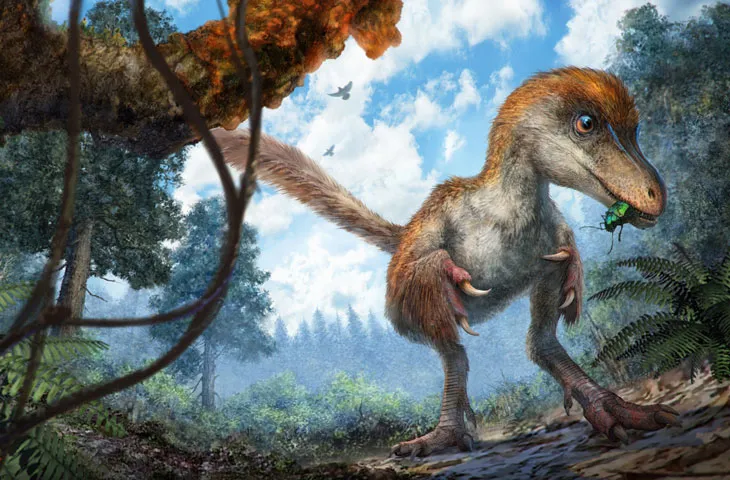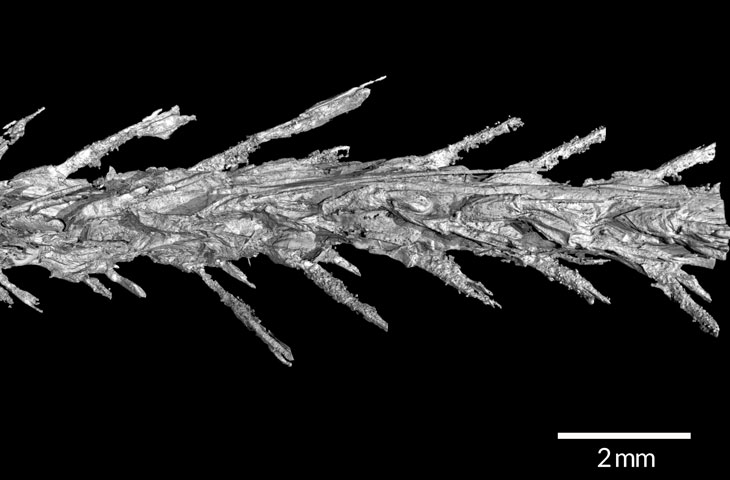Dinosaur tail preserved in amber, with feathers
99-million-year-old fossil provides 3-D details

SHAKE YOUR TAIL FEATHER This feathered dinosaur tail is preserved in a 99-million-year-old lump of amber. Similarly stuck are several ants, a beetle and bits of foliage.
Ryan C. McKellar/Royal Saskatchewan Museum










